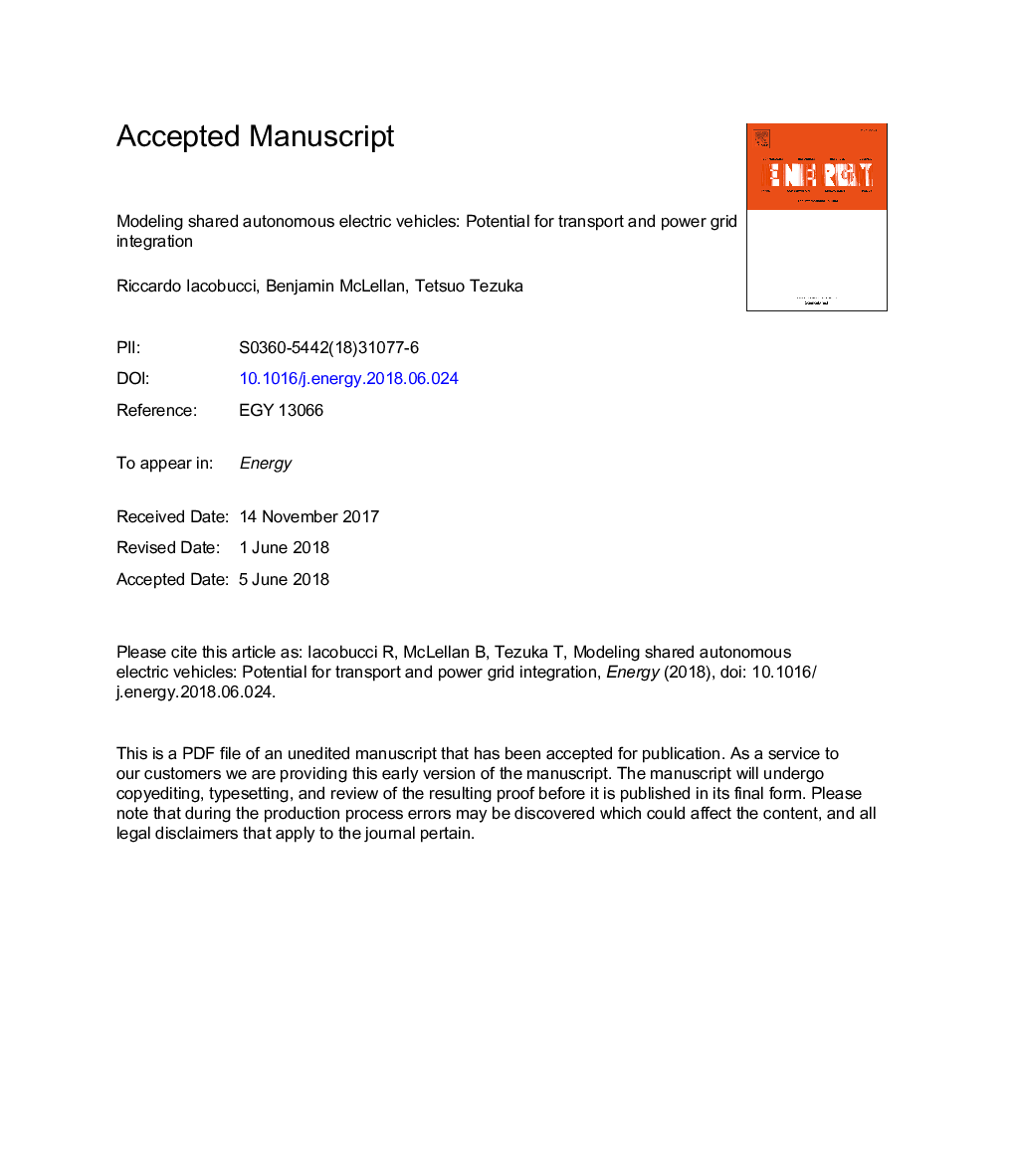| Article ID | Journal | Published Year | Pages | File Type |
|---|---|---|---|---|
| 8071145 | Energy | 2018 | 65 Pages |
Abstract
One-way car-sharing systems are becoming increasingly popular, and the introduction of autonomous vehicles could make these systems even more widespread. Shared Autonomous Electric Vehicles could also allow for more controllable charging compared to private electric vehicles, allowing large scale demand response and providing essential ancillary services to the electric grid. In this work, we develop a simulation methodology for evaluating a Shared Autonomous Electric Vehicle system interacting with passengers and charging at designated charging stations using a heuristic-based charging strategy. The influence of fleet size is studied in terms of transport service quality and break-even prices for the system. We test the potential of the system to supply operating reserve by formulating an optimization problem for the optimal deployment of vehicles during a grid operator request. The results of the simulations for the case study of Tokyo show that a fleet of Shared Autonomous Electric Vehicles would only need to be about 10%-14% of a fleet of private cars providing a comparable level of transport service, with low break-even prices. Moreover, we show that the system can provide operating reserve under several operational conditions even at peak transport demand without significant disruption to transport service.
Related Topics
Physical Sciences and Engineering
Energy
Energy (General)
Authors
Riccardo Iacobucci, Benjamin McLellan, Tetsuo Tezuka,
